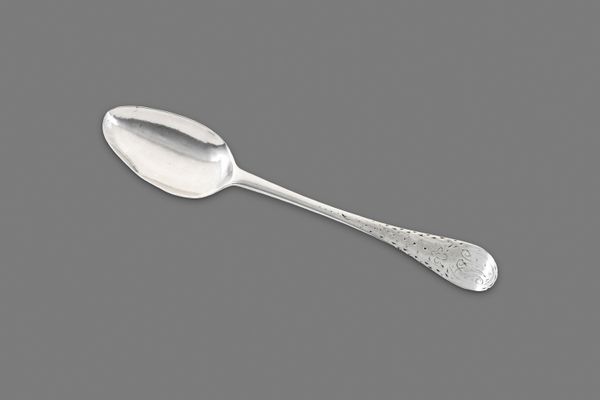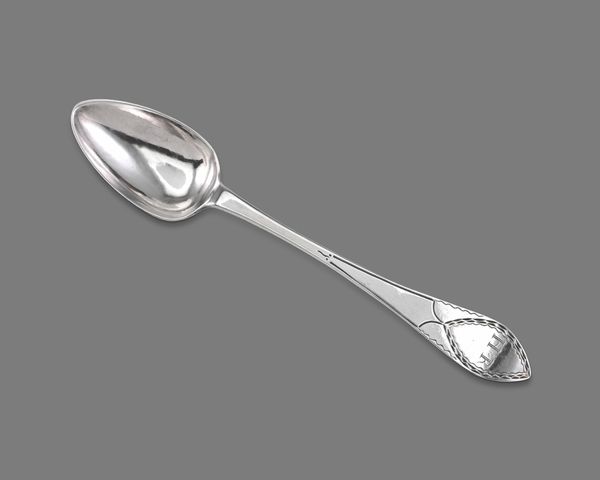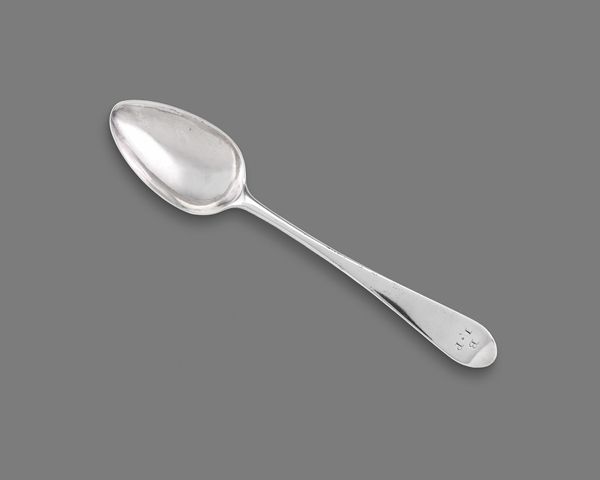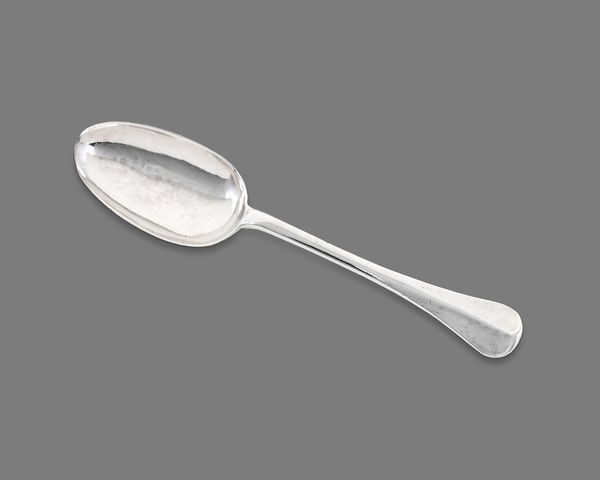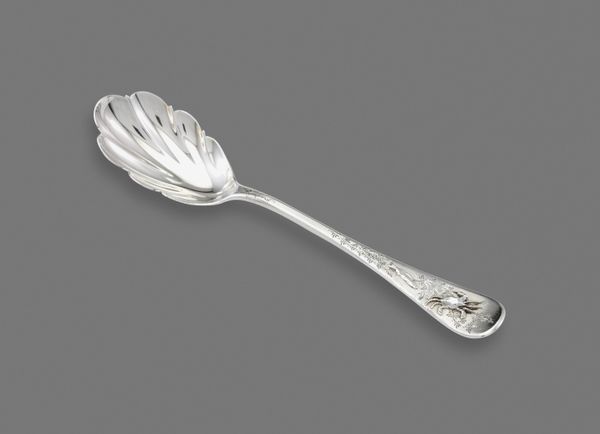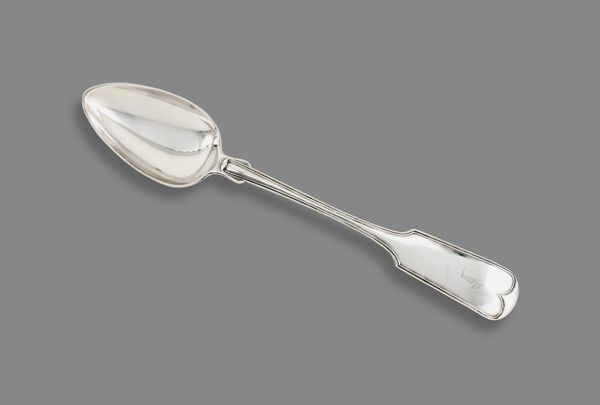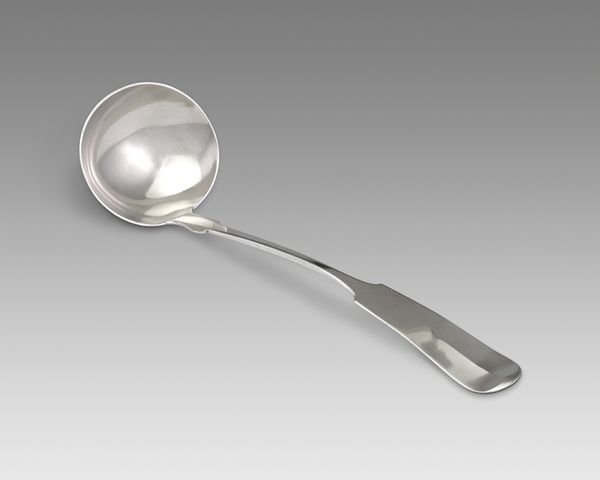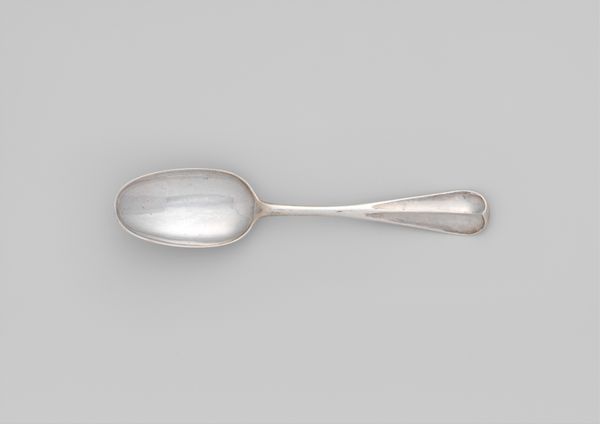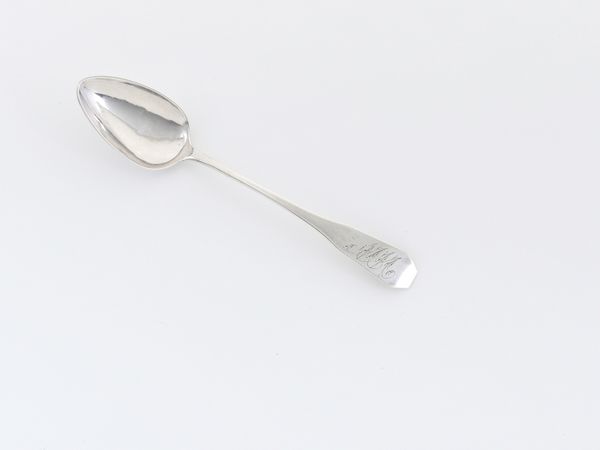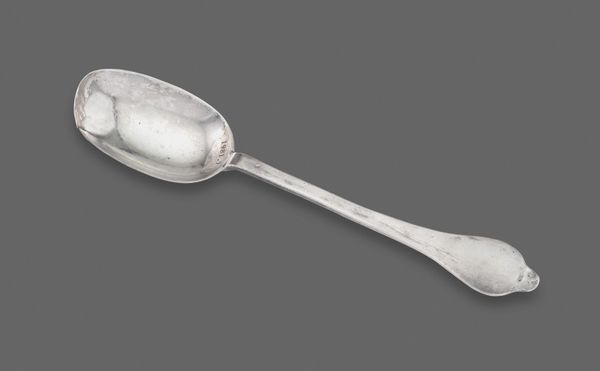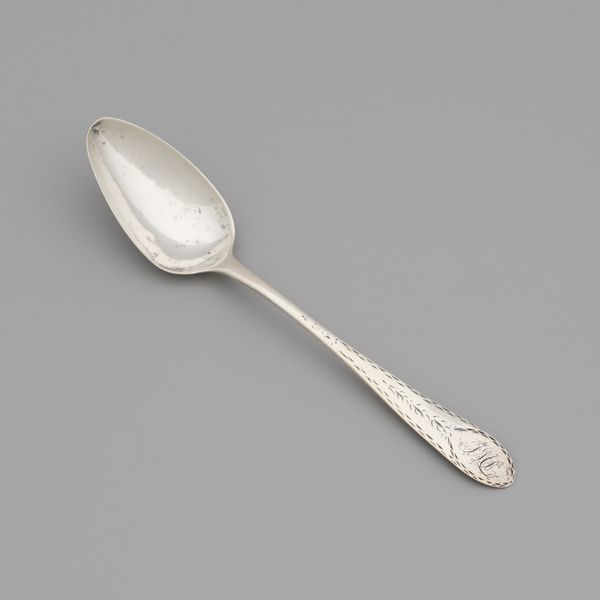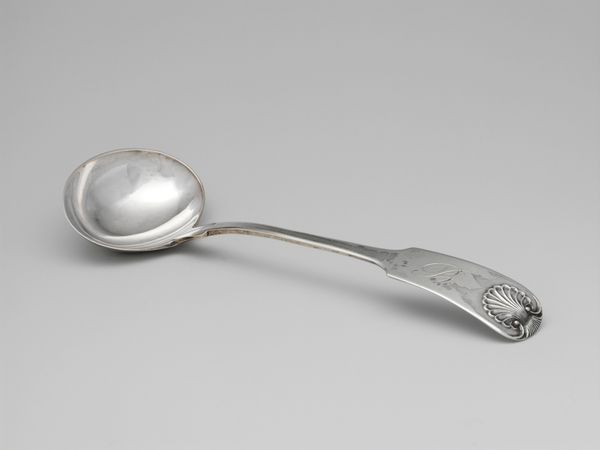
silver, metal
#
silver
#
metal
#
united-states
#
decorative-art
Dimensions: 22 × 41 cm (8 5/8 × 1 5/8 in.)
Copyright: Public Domain
Curator: This, our listeners, is a silver spoon dating from about 1830, a fascinating example of decorative art from the United States. Editor: It’s gleaming, almost blindingly so. The metalwork seems so precise. There’s definitely some craftsmanship here. It feels heavy, dignified, and very… bourgeois. Curator: Indeed. Objects like this speak volumes about social hierarchies. A simple utensil, yes, but one imbued with considerable cultural meaning and demonstrating affluence. What makes this different from those spoons used by other classes at that time? Editor: Look at the handle – there's delicate engraving! Clearly it's more than just functional; it's meant to be seen and admired, to act as an emblem of status through display. The act of its making required significant labor. Who mined the silver? Who smithed it? And under what conditions? Curator: An excellent point. And consider the political context of the 1830s in America— a time of both burgeoning wealth for some and the continued exploitation of others. This spoon becomes a potent symbol, reflecting power and social divisions of the time. Silver was a medium of political exchange between Indigenous tribes and the burgeoning Europeans along the coast. How did that earlier history affect its current state here? Editor: Right, it also makes you think about consumption and display. Silverware needed to be maintained, polished—more labor intensive. But in what contexts were pieces such as this actually used? How did those patterns of labor and maintenance contribute to the perceived beauty of the metal as a sign of privilege? Curator: It makes me question its value as an artwork. Today we would consider it as such, but at the time would this spoon have been considered anything more than functional art or utilitarian object? And does the silver and design increase or decrease the value? Editor: To me it does highlight value but also use: as an artistic representation of design and labour to get something like this created for consumption purposes. Curator: Looking at it through both lenses makes it such a dynamic artifact. Editor: Exactly. It’s deceptively simple. It shows beauty from art history in that period!
Comments
No comments
Be the first to comment and join the conversation on the ultimate creative platform.
